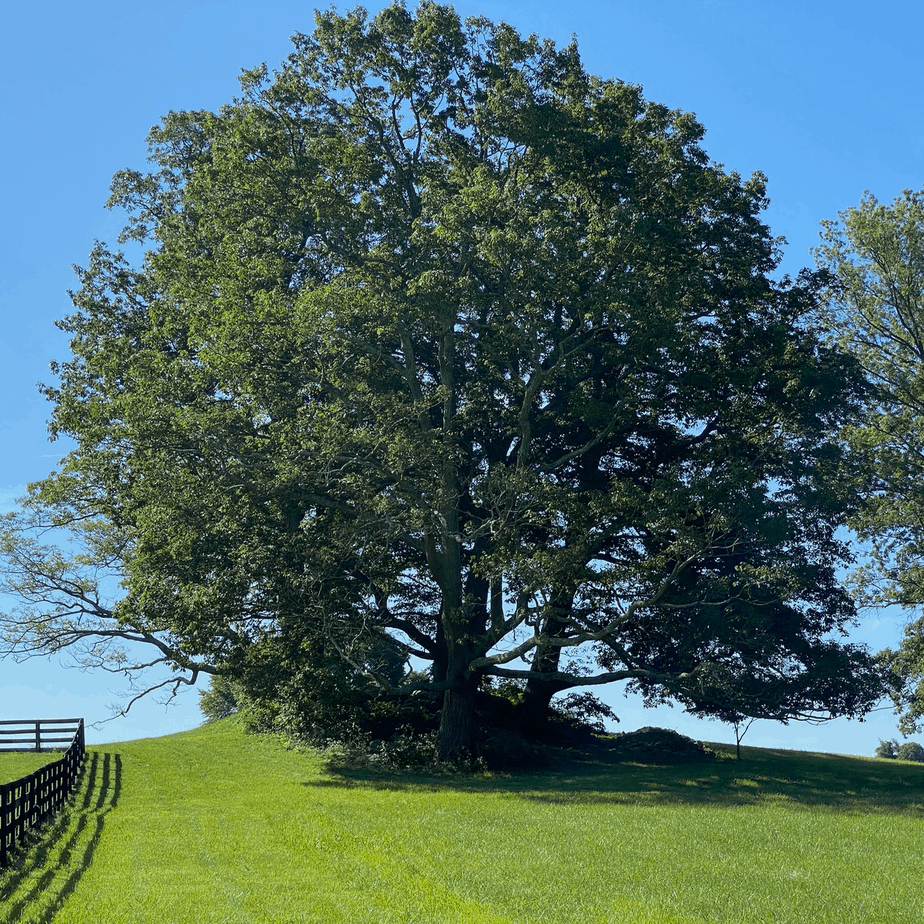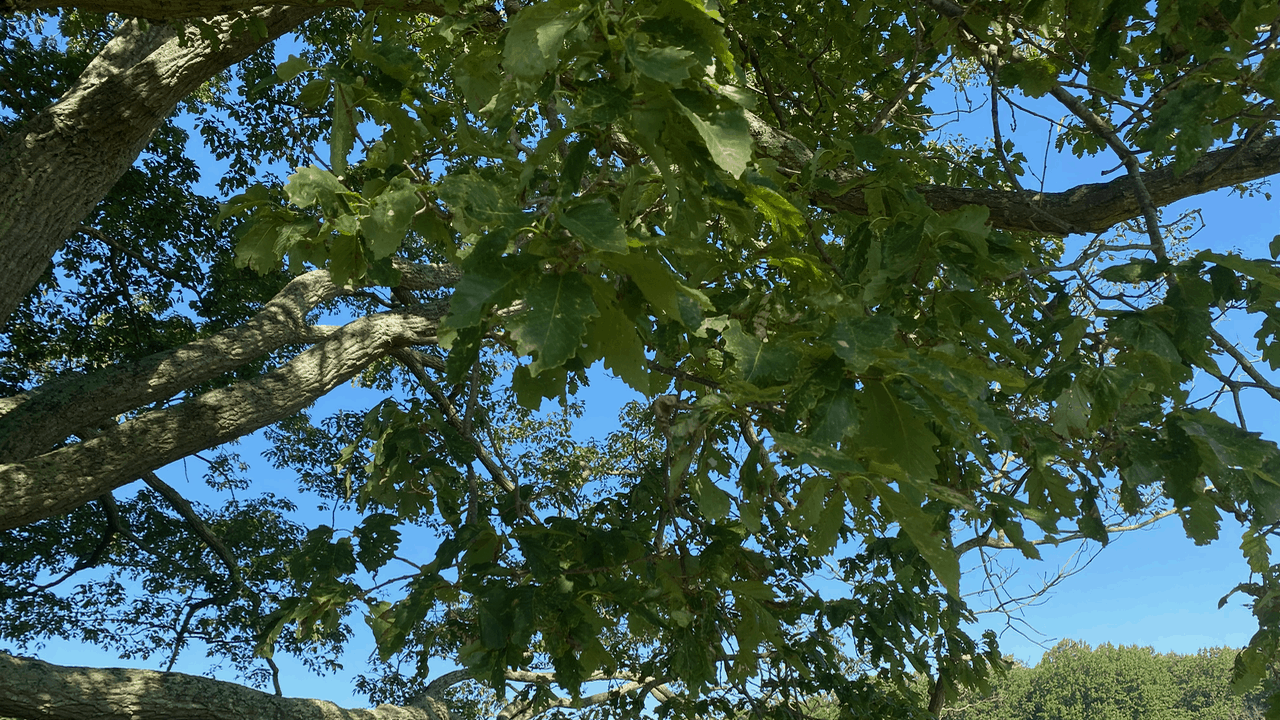Oak trees are probably one of my favorite types of trees. The Chestnut Oak is a lovely member of the white oak group. It's scientific name is Quercus prinus. There is a cluster of Chestnut Oak trees on my Mom’s farm in The Plains, Virginia. This is a great opportunity to get up-close to some of these magnificent trees.
Characteristics of Chestnut Oak Trees
The leaves are single and alternate on the stems. They are about 4 to 8 inches long, an oblong shape, with scalloped edges. The technical name for scalloped edges is crenate, undulate. The leaf venation is pinnate. This means one central vein with lateral veins extending from it. Healthy leaves are shiny green on top with a paler underside.
The bark on older trees is silver and highly textured. It appears thick with clearly defined ridges.
Large brown acorns are produced in the fall. They are food for a variety of wildlife.
These trees grow from 60 to over 120 feet tall, depending on the site. They have a large spread. As a result, they are sometimes as wide as they are tall. The canopy is typically symmetrical.
Where are Chestnut Oak - Quercus prinus trees found?
First of all, these trees are commonly found on rocky sites. The ones in these photos are on a typical rocky knoll. Chestnut oak trees like full sun.
Second, they can grow and thrive on infertile soils, but they do best in rich well drained areas.
Finally, they thrive in a large swath of the Eastern United States extending into Canada, down to the Carolinas, and west to Tennessee and Alabama. It is easy to find lots of Chestnut Oaks in the Shenandoah National Park. They are able to be planted in a much wider range. The largest recorded Chestnut Oak is in the Great Smoky Mountains National Park. It is 144 feet tall.
References:
Find out a lot of technical information about this tree on this USDA information sheet. Also, this Forest Service fact sheet is also helpful.



